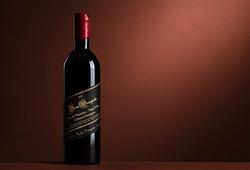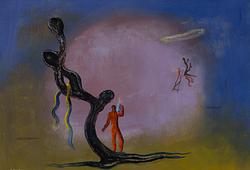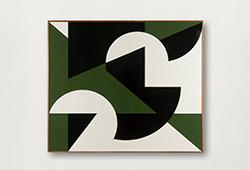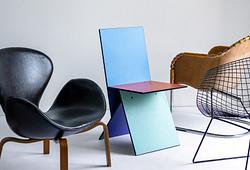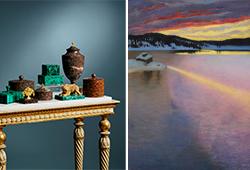Lynn Chadwick
"Maquette II Jubilee III"
Signed Chadwick, numbered and stamped with foundry mark 'CHADWICK C18 7/9'. Conceived in 1984 and cast by Burleighfield Foundry, High Wycombe. Patinated bronze. Height 50.8 cm.
Alkuperä - Provenienssi
Berkeley Square Gallery, London.
Acquired from the above in 1989.
Thence by descent to the current owner.
Näyttelyt
Marlborough Fine Art, London, October - November, 1984 (illus. p.20, exhibition catalogue, another example)
Kirjallisuus
Dennis Farr & Eva Chadwick, "Lynn Chadwick Sculpture: With a Complete Illustrated Catalogue 1947-1996", 2014, cat. no. C18, another cast illustrated in black and white on page 353.
Muut tiedot
Lynn Chadwick’s characteristic figures are immediately recognizable. They have a voice all their own, and their distinct formal language resembles no one else’s. Majestic strangers, enigmatic, hardly resting—rather, vigilant. With their geometrically simplified forms and angularly draped cloaks, they evoke fascination and associations.
Chadwick debuted on the British art scene shortly after World War II, alongside a new generation of artists. Europe lay in ruins, the world in shock after witnessing the horrors of war, genocide, and the effects of the atomic bomb. Chadwick himself served as a pilot in the R.A.F. during the war. From a young age, he had wished to dedicate his life to art. His parents’ disapproval forced him to compromise on his career, and he therefore trained as an architect. Before the war, he worked as a draftsman in architectural offices. Chadwick had no formal artistic training, and one can perhaps discern the strict geometry of architectural drawing in his work. After the war, he was filled with a longing to create, to achieve something new.
However, it took some time before he dared to fully take the step and become an artist. For several years, he worked successfully as a designer and interior architect. In the late 1940s, Chadwick supported himself designing, among other things, display stands, furniture, and wallpaper patterns, while simultaneously working on his own art.
Chadwick achieved his international breakthrough through the Venice Biennales of 1952 and 1956, and has since been regarded as one of the most important artists in postwar British art. The expression in Lynn Chadwick’s sculptures is closely linked to his working methods. Largely self-taught, he invented his own technique. The method has been described as three-dimensional drawing with metal rods, where Chadwick first bent and shaped the rods into the desired form, which were then welded together. He would then fill the parts intended to be solid. For some sculptures, he used metal sheets, creating the impression of a “metal skin.” It was not until the late 1950s that he also began casting in bronze. Chadwick placed great emphasis on the patination of his sculptures and worked extensively with surface texture and color nuances.
The triangle, in various configurations, is the fundamental geometric form in Chadwick’s work, sometimes combined into rectangles. This form, placed vertically or diagonally, rarely horizontally, constitutes the backbone of the sculptures and creates formal tension. The artist himself considered the triangle the simplest draft of a human or animal figure, from which the body was created. He emphasized that he always started from the human figure in his art.
The present sculpture, Maquette II Jubilee III, comes from the artist’s 1980s production, recognizable for its iconic and mature expression where forms have been purified and stripped down. As viewers, we encounter two archetypal and timeless forms, where it is difficult to say whether Chadwick drew inspiration from Neolithic civilization or from Jung’s theories on archetypes and the collective unconscious. The figures that populate the artist’s conceptual world are hybrids borrowing traits from humans, birds, reptiles, and insects, making us partially identify with them while simultaneously feeling fear. In this group, it is primarily the faces of the figures that convey meaning: the square symbolizes the man, and the triangle the woman—a recurring motif throughout his oeuvre.
Chadwick himself described art as a dark inner force that manifests through the artist and is translated through his skill and ability. What we, as viewers, receive through the artist’s translation, we are free to interpret.




